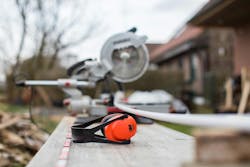The National Association of Home Builders reports that the housing industry is still facing severe labor shortages across trades, placing upward pressure on home prices.
In July, the HMI survey asked builders specifically about shortages in 15 different occupations. Shortages of labor directly employed by builders remained at least fairly widespread for each of the 15, ranging from a low of 47 percent for building maintenance managers to a high of 83 percent for framing crews.
Many of the shortage percentages were little changed from where they were at this point last year. The share of builders reporting a shortage of rough carpenters actually ticked down a percentage point, from 83 percent in 2018 to 82 percent this year. Labor shortages in the other 14 occupations were either unchanged or even more widespread than they were in 2018. Averaged across the 9 occupations NAHB has been covering in a consistent way since the 1990s, the incidence of shortages reached 69 percent in 2019—the highest number on record.
The same survey asked builders about the effects labor shortages may be having on their businesses. Four of these effects stand out as very common (cited by at least three-fourths of builders. Three are the same as the ones we’ve been reporting consistently over the past several years: causing builders to pay higher wages/subcontractor bids (reported by 87 percent of builders), making it difficult to complete projects on time (81 percent) and forcing them to raise home prices (75 percent).
